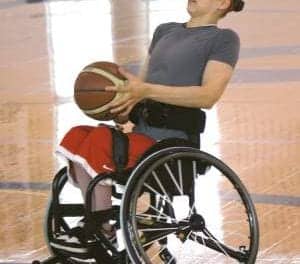Jon Sigurdsson, the president and CEO of Össur, Reykjavik, Iceland, announced recently in a news release from the company that two amputees are reportedly the first in the world to able to control their lower-limb prosthetics with their thoughts.
This is the result of tiny implanted myoelectric sensors (IMES) provided by the Alfred Mann Foundation and surgically placed into the amputees’ residual tissue that trigger the desired movement via a receiver located inside the prosthesis, the release notes. This process occurs subconsciously, continuously, and in real time.
“Mind-controlled Bionic prosthetic legs are a remarkable clinical breakthrough in next-generation Bionic technology,” Sigurdsson says, in the release. “By adapting not only to the individual’s intentional movements but to intuitive actions, we are closer than ever to creating prosthetics that are truly integrated with their user.”
Bionic prosthetic limbs produced by Össur are, the company notes in the release, smart limbs capable of real-time learning and automatically adjusting to the user’s gait, speed, and terrain. However, walking while wearing a Bionic prosthesis still takes some conscious thought from the user.
Orthopedic surgeon Thorvaldur Ingvarsson, MD, PhD, Össur’s director of research and development who spearheaded this project, says in the company’s news release that movement in able-bodied individuals begins subconsciously, which triggers electrical impulses inside the body that spur the muscles to work. However, in an amputee wearing Össur’s new prosthesis, the electrical impulse from the brain is received by the IMES, which Ingvarsson surgically placed into muscles in the amputee’s residual limb.
“The technology allows the user’s experience with their prosthesis to become more intuitive and integrative,” Ingvarsson explains in the release.
“The result is the instantaneous physical movement of the prosthesis however the amputee intended. They no longer need to think about their movements because their unconscious reflexes are automatically converted into myoelectric impulses that control their Bionic prosthesis,” he continues.
According to a news release from Thomson Reuters, one of the amputees who participated in the First-in-Man research—Gummi Olafsson, who lost his right foot and lower leg years after being involved in a traffic accident as a child—has been trialing the IMES and an Össur bionic limb for more than a year.
Once the IMES sensor and receiver were placed, they allowed Olafsson to control his prosthetic leg and foot almost instantly, per the Thomson Reuters release. They worked even when he used a different prosthesis that did not include the receiver, he notes.
“As soon as I put my foot on, it took me about 10 minutes to get control of it. I could stand up and just walk away. It was, like you couldn’t believe the feeling when you were moving your ankle,” he says.
“It was really strange,” he continues in the release. “I couldn’t explain it. It was like, I was moving it with my muscles, there was nobody else doing it, the foot was not doing it, I was doing it.”
Olafsson says in the release that his body continues to adapt to his prosthetic limb more each day, enabling him to gain increased control of it.
Ingvarsson states in the release from Össur that clinical trials to assess the technology, which works with all commercially available Össur Bionic prosthesis, will continue.
[Sources: Össur, Thomson Reuters]



